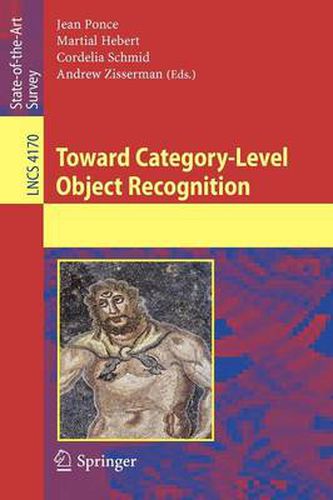Readings Newsletter
Become a Readings Member to make your shopping experience even easier.
Sign in or sign up for free!
You’re not far away from qualifying for FREE standard shipping within Australia
You’ve qualified for FREE standard shipping within Australia
The cart is loading…






This title is printed to order. This book may have been self-published. If so, we cannot guarantee the quality of the content. In the main most books will have gone through the editing process however some may not. We therefore suggest that you be aware of this before ordering this book. If in doubt check either the author or publisher’s details as we are unable to accept any returns unless they are faulty. Please contact us if you have any questions.
Although research in computer vision for recognizing 3D objects in photographs dates back to the 1960s, progress was relatively slow until the turn of the millennium, and only now do we see the emergence of effective techniques for recognizing object categories with different appearances under large variations in the observation conditions. Tremendous progress has been achieved in the past five years, thanks largely to the integration of new data representations, such as invariant semi-local features, developed in the computer vision community with the effective models of data distribution and classification procedures developed in the statistical machine-learning community. This volume is a post-event proceedings volume and contains selected papers based on presentations given, and vivid discussions held, during two workshops held in Taormina in 2003 and 2004.The main goals of these two workshops were to promote the creation of an international object recognition community, with common datasets and evaluation procedures, to map the state of the art and identify the main open problems and opportunities for synergistic research, and to articulate the industrial and societal needs and opportunities for object recognition research worldwide. The 30 thoroughly revised papers presented are organized in the following topical sections: recognition of specific objects, recognition of object categories, recognition of object categories with geometric relations, and joint recognition and segmentation.
$9.00 standard shipping within Australia
FREE standard shipping within Australia for orders over $100.00
Express & International shipping calculated at checkout
This title is printed to order. This book may have been self-published. If so, we cannot guarantee the quality of the content. In the main most books will have gone through the editing process however some may not. We therefore suggest that you be aware of this before ordering this book. If in doubt check either the author or publisher’s details as we are unable to accept any returns unless they are faulty. Please contact us if you have any questions.
Although research in computer vision for recognizing 3D objects in photographs dates back to the 1960s, progress was relatively slow until the turn of the millennium, and only now do we see the emergence of effective techniques for recognizing object categories with different appearances under large variations in the observation conditions. Tremendous progress has been achieved in the past five years, thanks largely to the integration of new data representations, such as invariant semi-local features, developed in the computer vision community with the effective models of data distribution and classification procedures developed in the statistical machine-learning community. This volume is a post-event proceedings volume and contains selected papers based on presentations given, and vivid discussions held, during two workshops held in Taormina in 2003 and 2004.The main goals of these two workshops were to promote the creation of an international object recognition community, with common datasets and evaluation procedures, to map the state of the art and identify the main open problems and opportunities for synergistic research, and to articulate the industrial and societal needs and opportunities for object recognition research worldwide. The 30 thoroughly revised papers presented are organized in the following topical sections: recognition of specific objects, recognition of object categories, recognition of object categories with geometric relations, and joint recognition and segmentation.